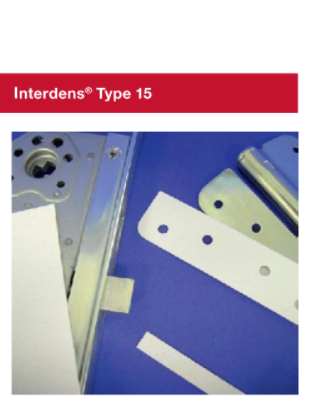-
Posts
476 -
Joined
-
Last visited
Everything posted by Neil ashdown
-

Making good a fire door after cutting into it
Neil ashdown replied to a topic in Fire Doors and Accessories
Lipping thickness spec has come from https://www.falconpp.co.uk/downloads/ but clearly applies to those particular doors so consult the door leaf manufacturer where that's possible. However, where you are unable to do so the information about lipping thickness, adhesives and timber species can be applied as good practice. -
This can be a troublesome issue and as you say the gap (according to BS 8214) should be 4mm maximum with the smoke seal fin just in contact with the meeting edge of the opposing leaf. First, make sure that the smoke seal is fitted to one leaf only and not both. Then make sure you are using a single fin smoke seal to reduce friction. If that doesn't work change the self-closer for one that has latching adjustment - the door should close steadily (not fast) and the latching adjustment should pull the door shut at the point where it is almost-closed.
-
Assuming its a timber-based door - If you are able to consult the installation instructions or data sheet for the fire door leaf you can check that the existing hinges are suitable. If you cannot trace the door leaf manufacturer to do this and the hinges are in good condition you could retain them, although personally I would change them because most timber fire doors have a limit on the dimensions of the hinge knuckle.
-

National recognised qualification
Neil ashdown replied to Andrew Barber's topic in Fire Doors and Accessories
There is an NVQ available for fire door installation but it this is not widely taken up, possibly because there are easier tasks and there is currently no statutory requirement to hold a dedicated qualification or certification to be able to install, maintain and inspect fire doors. However, you are correct the industry is working on this so keep an eye on things! -
If the cupboard opens onto a protected escape route the door should provide for restricted spread of cold smoke eg. FD30(s) (section 62.12 of Fire Safety in Purpose Built Blocks of Flats at https://assets.publishing.service.gov.uk/government/uploads/system/uploads/attachment_data/file/1020410/Fire_Safety_in_Purpose_Built_Blocks_of_Flats_Guide.pdf ) From Approved Document B, Appendix C https://assets.publishing.service.gov.uk/government/uploads/system/uploads/attachment_data/file/937931/ADB_Vol1_Dwellings_2019_edition_inc_2020_amendments.pdf So if the fire door to a cupboard opens onto a protected escape corridor or stair, the door should provide for restricted spread of cold smoke eg. FD30(s)
-
A timber-based fire door will have specific requirements for the door frame. Consult the fire door leaf manufacturer's installation data sheet for information about the requirements for the door frame - eg. type of material, density, dimensions, fixings, frame to wall gap and fire-stopping requirements.
-
Might not be. If the film is on the non fire side of the door and the FR glass is not insulating glass, then heat transfer from fire side to non-fire side could cause the film to flame.
-

Panic bar hardware for exit in daily use
Neil ashdown replied to PaulRA's topic in Fire Doors and Accessories
Yes a Pullman latch is spring-loaded so that it retracts when it comes into contact with the strike/keep. So long as you can find a device that is suitable to fit your PVCu door then it should be an improvement on your existing one. -
Door blank is the way to go. These are purpose-made for cutting to size and lipping but you must follow the blank manufacturers instructions as regards where abouts you can make the cut, lipping type, lipping thickness and adhesive type. A standard fire door will usually (with few exceptions) be unsuitable for trimming to these heights.
-
Sections 2.4 and 4.4 of this document https://www.falconpp.co.uk/media/32386/fpp-im-1401-installation-of-fire-rated-doorsets.pdf cover the subject of the gap under the fire door leaf.
-
Seems as though Building Control are classifying the building as a garage with an adjacent habitable room. That would be a reason for a self-closing FD30(s) door to be required.
-

Do I need to use special paint on new fire doors?
Neil ashdown replied to a topic in Fire Doors and Accessories
Clearly, it would be usual practice to not paint those items. Having said that, it would be interesting to find out what reason has been given not to paint those items. Certainly, it would be detrimental to paint the smoke seals and weather seals. -

Fitting a fire door to an existing frame.
Neil ashdown replied to a topic in Fire Doors and Accessories
The main consideration is that many 'standard' fire doors have a strict limit (usually 3mm/4mm max) for trimming the edges to suit an existing door frame. So check the sizes before you buy. Combined intumescent fire and smoke seals can be fitted in the edges of the door leaf or in the frame. Make sure you comply fully with the door leaf manufacturers installation instructions including the self-closing device and sealing the gap between the door frame and the surrounding wall. -

Intumescent Strip, Single or Double fin
Neil ashdown replied to a topic in Fire Doors and Accessories
Current Building Regulations require that a door between a dwellinghouse and a garage is a self-closing thirty minute fire door with cold smoke seals. https://assets.publishing.service.gov.uk/government/uploads/system/uploads/attachment_data/file/937931/ADB_Vol1_Dwellings_2019_edition_inc_2020_amendments.pdf Appendix C Various types of smoke seals are available including bat wing, compression, combined intumescent with brush and combined intumescent with a fin or fins. There is guidance about selecting smoke seals for doors here https://www.ifsa.org.uk/documents/ -
When fitting flush bolts to double leaf doors only the active leaf should be fitted with combined intumescent fire and smoke seals. The flush bolt should be fitted to the slave leaf so that the seals by-pass the flush bolt rather than be interrupted by it.
-

Are specific fire door gaps a legal requirement?
Neil ashdown replied to a topic in Fire Doors and Accessories
-
Yes, like most things there are various types of self closing device and there will be a limit to the size and weight of door that a given self-closer is suitable for. So the self-closing device should be selected based on minimum power size 3 for the size and weight of the door and should have a dampening mechanism so that the door meets the rebate stop of the door frame without slamming.
-

Constantly damaged vision panels
Neil ashdown replied to Chris Allis's topic in Fire Risk Assessments
Georgian wired glass relies on the wired grid for integrity, there are other options. I would speak to a specialist for advice, you could try https://www.ggf.org.uk/ and https://zeroplus.co.uk/collections/glass -

space between fire door frame and opening
Neil ashdown replied to a topic in Fire Doors and Accessories
Does the fire resistance performance test evidence for the mastic product support that use? -

Are specific fire door gaps a legal requirement?
Neil ashdown replied to a topic in Fire Doors and Accessories
In terms of fire resistance performance, BS 8214: 2016 guidance states that such a gap should generally be between 2mm and 4mm but you should check the fire door leaf manufacturers installation data sheet to see what is required. In terms of restricted cold smoke spread, one would expect to see such a gap sealed with a combined intumescent fire and smoke seal. Or if the meeting edges have a rebate or astragal, a bat wing type or compression type smoke/acoustic seal. -
There are no regulations, in England and Wales, that deal specifically with a defective fire door inside an individual's own private dwelling. Clearly, though it would be desirable to repair the defect so that the spread of fire and smoke can be sufficiently mitigated.
-

Fire doors in a domestic 3 storey house
Neil ashdown replied to a topic in Fire Doors and Accessories
Maybe the doors could be upgraded to improve their fire resistance performance. Historic England https://historicengland.org.uk/images-books/publications/fire-resistance-historic-timber-panel-doors/ Building regs Page 135 Fire doors https://assets.publishing.service.gov.uk/government/uploads/system/uploads/attachment_data/file/937931/ADB_Vol1_Dwellings_2019_edition_inc_2020_amendments.pdf -
? ?
-
Yes, it is possible to remediate excessive gaps. The most effective method would be to remove the door leaf and door frame and then reinstall to the correct tolerances. Refer to BS 8214: 2016 for guidance https://shop.bsigroup.com/products/timber-based-fire-door-assemblies-code-of-practice/standard




